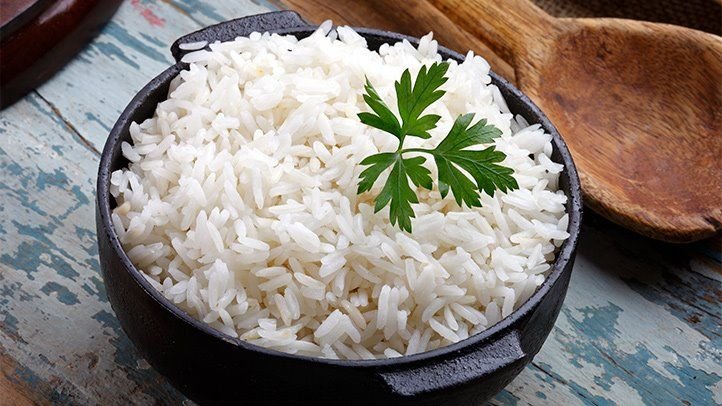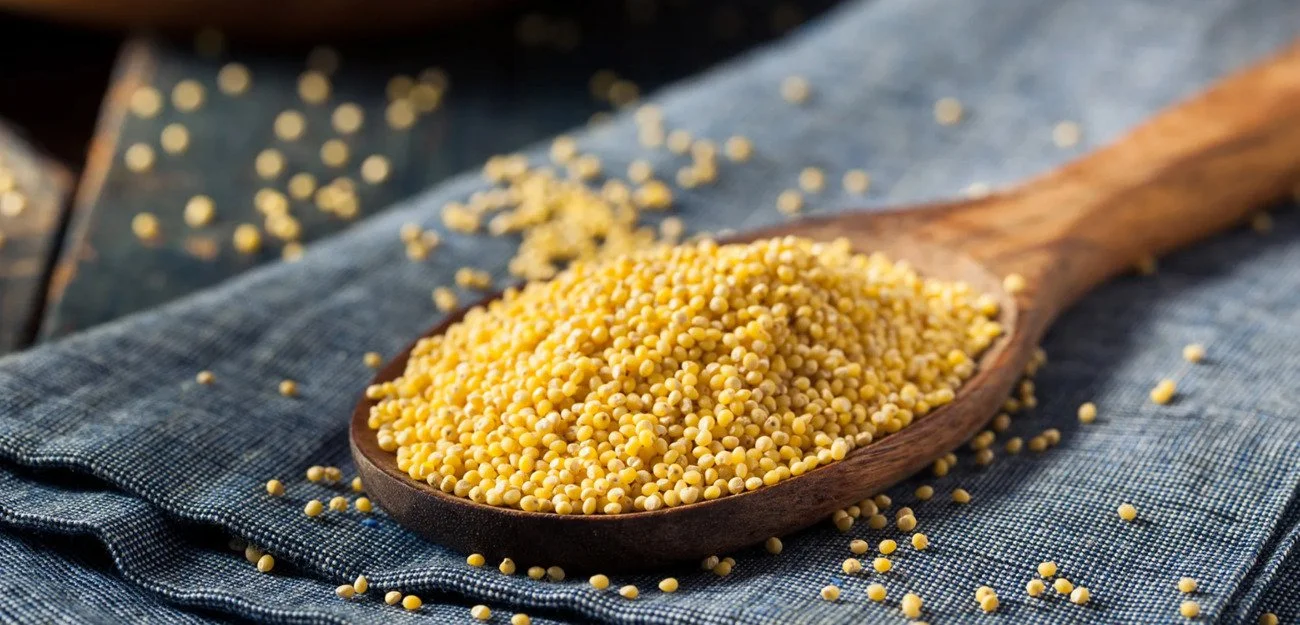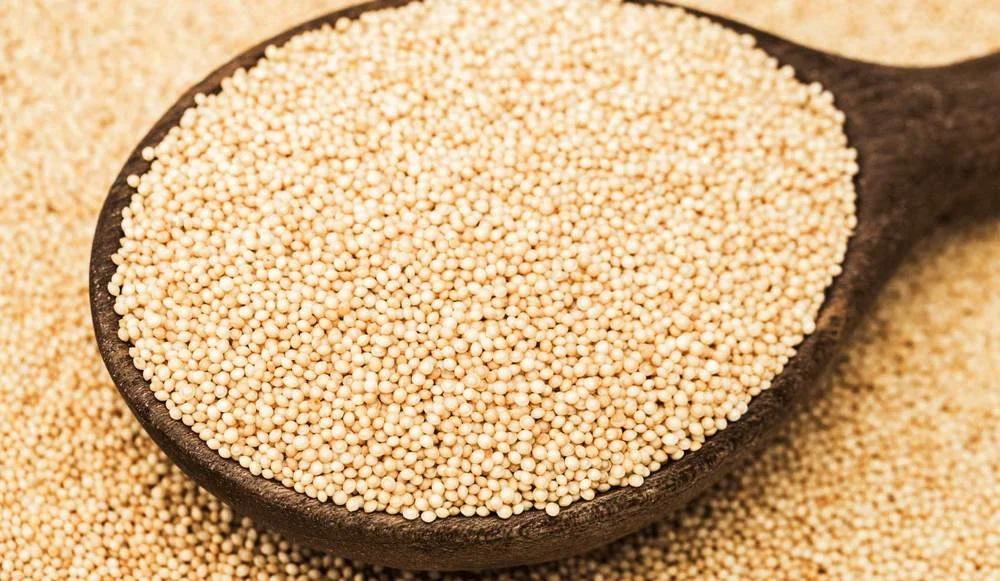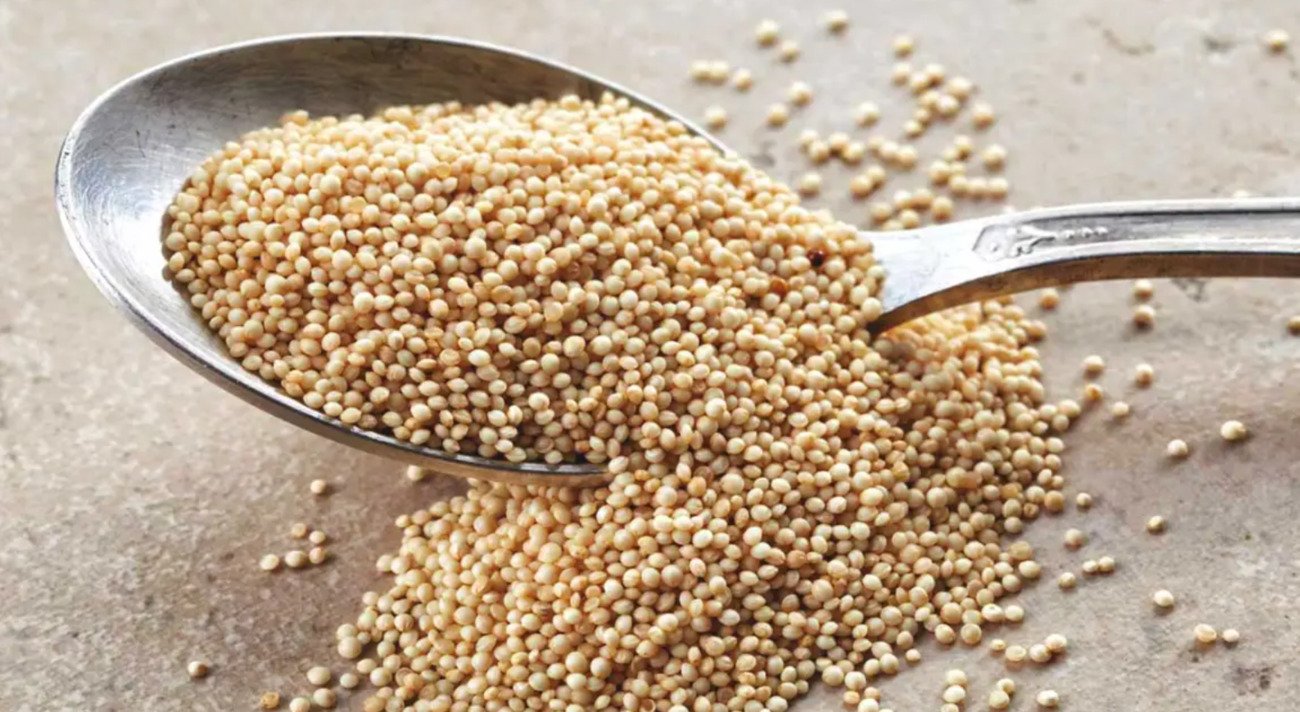How to Diversify Your Grains
Exploring Nutritious Rice Alternatives
Discover > Healthy Living Through Food > How to Diversify Your Grains
In a world where dietary choices play a crucial role in overall health, the spotlight often falls on staple grains like rice(how long does rice last?). While rice (What wine goes well with rice?) has been a dietary cornerstone for centuries, the modern quest for diverse and nutritious alternatives has gained momentum.
This article aims to delve into the rich landscape of grain diversity, focusing on nutritious rice alternatives that not only broaden culinary horizons but also offer a myriad of health benefits.
The Global Significance of Rice
Rice, originating from Asia, has become a global staple, feeding billions and sustaining diverse cultures. It is a primary source of energy, a canvas for various culinary creations, and a symbol of sustenance in many parts of the world.
However, an overreliance on a single grain may lead to nutritional deficiencies and limit the intake of essential nutrients. Exploring alternatives becomes imperative for a well-rounded, healthy diet.
Learn how to make white rice fluffy and delicious every single time. We give you the tips, tricks and instructions for cooking perfect rice.
The Nutritional Profile of Rice
Before diving into alternatives, it's essential to understand the nutritional composition of rice.
Primarily a carbohydrate source, rice provides energy but can be lacking in certain key nutrients. While brown rice is a better choice than its refined counterpart, it still may not offer the comprehensive nutritional profile found in some alternatives.
Learn more about Food Intake and Metabolism through this TexasMomBlog post.
The Need for Diversification
In the realm of nutrition, the principle of diversification has emerged as a fundamental aspect of maintaining a healthy and well-rounded diet. Diversifying one's grain intake, particularly moving beyond the ubiquitous rice, is not just a matter of culinary exploration but a strategic approach to meeting nutritional needs comprehensively.
This section delves into the reasons behind the imperative need for diversification in our grain choices.
Diverse Nutrient Profiles
Different grains bring unique nutrient profiles to the table. While rice, especially brown rice, offers a decent array of vitamins and minerals, it may not cover the full spectrum of essential nutrients. Exploring alternatives allows individuals to tap into a broader range of health-promoting compounds, ensuring the body receives a well-rounded nutritional intake.
Example: Quinoa (What wine goes well with quinoa?), a popular rice alternative, stands out as a complete protein source, containing all essential amino acids. Its rich composition in magnesium, iron, and B vitamins contributes to a more comprehensive nutritional profile compared to traditional rice.
Avoiding Nutritional Monotony
Over-reliance on a single grain, such as rice, can lead to dietary monotony. This monotony not only affects the sensory experience of eating but also the nutritional diversity of the diet. Diversification introduces a plethora of flavors, textures, and culinary possibilities, making the act of nourishing oneself an engaging and satisfying experience.
Example: Buckwheat, with its earthy and nutty flavor, provides a stark contrast to the mildness of rice. Incorporating it into meals not only broadens the flavor palette but also introduces a distinct texture, enhancing the overall eating experience.
Catering to Dietary Preferences and Restrictions
Individuals often have specific dietary preferences or restrictions, ranging from gluten intolerance to a desire for low glycemic index options. Diversifying grains accommodates these preferences and ensures that a wider audience can partake in a rich array of grains without compromising their dietary needs.
Example: For those avoiding gluten, quinoa and buckwheat emerge as excellent alternatives. Their gluten-free nature not only caters to dietary restrictions but also brings unique nutritional benefits to the table.
Enhancing Micronutrient Intake
Different grains possess varying concentrations of essential vitamins and minerals. By incorporating a variety of grains into one's diet, individuals can optimize their micronutrient intake, addressing potential deficiencies that might arise from relying solely on a single staple.
Example: Millet, (how long does millet last?) a staple in many Asian and African countries, offers a rich source of magnesium and phosphorus. Including millet in the diet can contribute significantly to meeting daily requirements for these essential minerals.
Fostering Culinary Creativity
Diversifying grains encourages culinary creativity and innovation in the kitchen. It challenges individuals to experiment with new recipes, cooking methods, and flavor combinations. This not only keeps the act of cooking exciting but also promotes a deeper understanding of diverse culinary traditions.
Example: Amaranth (how long does amaranth last?), often used in porridges and soups, can be transformed into an unexpected element in baking. The exploration of amaranth flour opens doors to a new realm of possibilities in creating gluten-free baked goods.
Sustainability and Crop Resilience
Overemphasis on a single grain can lead to issues related to crop vulnerability and sustainability. Diversification in agriculture, both on a global and individual scale, contributes to the resilience of crop systems, ensuring food security in the face of environmental challenges.
Example: Embracing less commonly consumed grains like amaranth contributes to the preservation of biodiversity in agriculture. Its adaptability to various climates and resistance to pests make it a sustainable choice for cultivation.
Preventing Over Reliance on Staple Crops
Global dependence on a few staple crops, like rice, makes food systems vulnerable to disruptions caused by climate change, diseases, or geopolitical factors. Diversifying grain choices on an individual level contributes to a more resilient and adaptable food system.
Example: Introducing alternative grains like quinoa or millet into everyday meals reduces the strain on traditional rice farming systems, promoting a more diversified and robust agricultural landscape.
Whether you're seeking nutritional insights or practical tips for incorporating wholesome foods into your daily routine, TexasRealFood aims to be your trusted companion on the path to optimal health and vitality.
Nutritious Rice Alternatives
Rice, a dietary staple for billions around the globe, has long held the throne in the realm of grains. However, as nutritional awareness expands and culinary curiosity flourishes, the spotlight is turning towards alternatives that offer not only diversity in taste and texture but also a powerhouse of essential nutrients.
Quinoa
Quinoa (pronounced keen-wah) has risen from relative obscurity to become a household name in the realm of nutrition and culinary exploration. Hailing from the Andean region of South America, quinoa has not only sustained indigenous peoples for thousands of years but has also captured the attention of health enthusiasts worldwide.
Quinoa's texture and neutral flavor make it an excellent substitute for rice or couscous(What wine goes well with couscous?) in various dishes. Its ability to absorb flavors makes it a versatile canvas for culinary creativity.
Nutritional Highlights
Quinoa is a complete protein, meaning it contains all nine essential amino acids that the human body cannot produce on its own. This makes it an excellent plant-based protein source for vegetarians and vegans.
With a higher fiber content than most grains, quinoa supports digestive health and helps in maintaining a feeling of fullness, making it a valuable component in weight management.
Quinoa is a good source of essential minerals such as magnesium, iron, phosphorus, and manganese. These minerals play key roles in bone health, energy metabolism, and overall well-being.
It contains various vitamins, including B-vitamins such as folate, thiamine, and riboflavin. Additionally, quinoa possesses antioxidants that help combat oxidative stress in the body.
Culinary Uses
Substitutes for rice in various dishes.
Excellent base for salads, pilafs, and grain bowls.
Cultural Context:
Quinoa finds its roots in the Andean regions of Peru, Bolivia, Ecuador, and Colombia. It was a staple in the diet of ancient civilizations, particularly the Inca Empire, where it was revered as the "mother of all grains" for its nutritional richness. The plant's ability to thrive in harsh conditions, including high altitudes and poor soils, made it a crucial crop for the resilience of these communities.
Cooking Tips:
Rinsing Quinoa:
Rinsing quinoa before cooking helps remove its natural coating, called saponin, which can impart a bitter taste. Place quinoa in a fine-mesh sieve and rinse under cold water for a minute.
Cooking Ratios:
The standard ratio for cooking quinoa is 1 part quinoa to 2 parts liquid. It can be cooked in water, broth, or a mixture of both for added flavor.
Fluffing Technique:
After quinoa has finished cooking, let it sit, covered, for a few minutes. Then, fluff it with a fork to achieve a light and fluffy texture.
Recipe: Quinoa Pilaf with Roasted Vegetables
Ingredients:
1 cup quinoa
2 cups vegetable broth (how long does vegetable broth last?)
1 cup cherry tomatoes, halved
1 zucchini, diced
1 red bell pepper, sliced
1 tablespoon olive oil
1 teaspoon dried oregano (how long does dried oregano last?)
Salt and pepper to taste
Instructions:
Rinse quinoa under cold water.
In a pot, combine quinoa and vegetable broth. Bring to a boil, then reduce heat and simmer until quinoa is cooked.
Toss vegetables with olive oil, oregano, salt, and pepper. Roast in the oven until tender.
Mix quinoa and roasted vegetables. (What wine goes well with roasted vegetables?) Serve as a nutritious and colorful pilaf.
Buckwheat
Buckwheat, despite its name, is not a wheat variety and holds a distinct place in the world of grains. Originating in Central Asia, this nutritious seed has woven its way into diverse cuisines globally. In this exploration, we will uncover the nutritional treasures, culinary versatility, and cultural significance that make buckwheat a standout choice for those seeking a wholesome and flavorsome alternative.
Nutritional Highlights:
Buckwheat stands out as an excellent plant-based protein source, offering a robust amino acid profile. This makes it particularly valuable for individuals adopting vegetarian or vegan diets.
Its significant content of rutin, a type of flavonoid, contributes to heart health by promoting blood circulation and reducing cholesterol levels. The soluble fiber in buckwheat further aids in maintaining cardiovascular well-being.
Buckwheat is a good source of essential minerals such as magnesium, copper, and manganese. These minerals play crucial roles in bone health, energy metabolism, and antioxidant defense.
Unlike wheat, buckwheat is naturally gluten-free, making it an ideal choice for those with gluten sensitivity or celiac disease. It opens up a world of possibilities for creating gluten-free recipes without compromising on taste or nutritional value.
Culinary Uses:
Buckwheat flour (how long does buckwheat flour last?), derived from ground buckwheat groats (how long do buckwheat groats last?), is a versatile ingredient in gluten-free baking. It imparts a nutty flavor and a hearty texture to pancakes, muffins, and bread.
Boiled buckwheat groats make a hearty and nutritious porridge. With a slightly nutty taste, it serves as a wholesome breakfast alternative, especially when paired with fruits, nuts (how long do nuts last?), or honey.
Cooked buckwheat makes an excellent base for pilafs and side dishes. Its ability to absorb flavors allows it to complement various herbs, spices, and vegetables.
Cultural Context:
In Eastern European countries, buckwheat has been a dietary staple for centuries. Kasha (how long does kasha last?), a traditional dish made by cooking buckwheat groats with broth or milk, remains a comfort food in Russia and neighboring regions.
Soba noodles (how long do soba noodles last?), crafted from buckwheat flour, are a staple in Japanese cuisine. Their delicate flavor and unique texture have made them popular not only in Japan but also internationally.
Recipe: Buckwheat Pancakes with Berries
Ingredients:
1 cup buckwheat flour
1 tablespoon sugar
1 teaspoon baking powder (how long does baking powder last?)
1/2 teaspoon salt
1 cup milk (or plant-based alternative)
1 egg
2 tablespoons melted butter (or oil)
Fresh berries for topping
Instructions:
In a bowl, whisk together buckwheat flour, sugar, baking powder, and salt.
In another bowl, whisk together milk, egg, and melted butter.
Pour wet ingredients into dry ingredients and stir until just combined.
Heat a griddle or skillet over medium heat. Pour 1/4 cup of batter for each pancake.
Cook until bubbles form on the surface, then flip and cook until golden brown.
Top with fresh berries and enjoy a hearty and nutritious breakfast.
Millet
Millet, often overshadowed by more prominent grains like rice and wheat, is a nutritional powerhouse that has sustained diverse cultures for centuries. With origins dating back to ancient civilizations, millet offers a unique blend of health benefits, culinary versatility, and resilience in various climates.
Nutritional Highlights:
Millet is a good source of essential nutrients, including magnesium, phosphorus, and B vitamins. Its nutrient profile contributes to bone health, energy metabolism, and overall well-being.
Being naturally gluten-free, millet is a safe and nutritious alternative for individuals with celiac disease or gluten sensitivity. It opens doors to diverse culinary possibilities without compromising on taste or nutritional value.
Millet contains a significant amount of dietary fiber, promoting digestive health and providing a feeling of fullness. Including millet in the diet can contribute to weight management and overall gut well-being.
Millet possesses antioxidants that help combat oxidative stress in the body. These compounds contribute to cellular health and may play a role in preventing chronic diseases.
Culinary Uses:
Cooked millet serves as an excellent base for grain bowls and pilafs. Its mild flavor allows it to absorb the essence of various herbs, spices, and broths, creating flavorful and wholesome dishes.
Millet porridge, made by simmering millet with milk or water, offers a nutritious and comforting breakfast option. It can be customized with fruits, nuts, and sweeteners for added flavor.
Millet flour (how long does millet flour last?), ground from millet grains, is a gluten-free alternative in baking. It can be used in various recipes, including pancakes, muffins, and cookies, adding a nutty and slightly sweet flavor.
Popped millet can be used as a cereal topping, adding a delightful crunch to yogurt or milk. It also serves as a healthy snack on its own.
Cultural Context:
Millet is a staple in many African and Asian countries, where it thrives in arid and semi-arid regions. Its resilience in challenging growing conditions has made it a vital crop for food security.
In some cultures, millet is used in traditional ceremonies and rituals. Its significance extends beyond the realm of daily nutrition, playing a role in cultural practices and community celebrations.
Recipe: Millet and Vegetable Stir-Fry
Ingredients:
1 cup millet
2 cups vegetable broth
2 tablespoons vegetable oil (how long does vegetable oil last?)
1 onion, thinly sliced
2 carrots, julienned
1 bell pepper, thinly sliced
1 cup broccoli florets
2 tablespoons soy sauce (how long does soy sauce last?)
1 tablespoon sesame oil (how long does sesame oil last?)
Sesame seeds (how long do sesame seeds last?) for garnish
Instructions:
Rinse millet under cold water.
In a pot, combine millet and vegetable broth. Bring to a boil, then reduce heat and simmer until millet is cooked.
In a large skillet, heat vegetable oil over medium-high heat. Add onions, carrots, bell pepper, and broccoli. Stir-fry until vegetables are tender-crisp.
Add cooked millet to the skillet. Drizzle with soy sauce and sesame oil. Toss to combine.
Garnish with sesame seeds and serve this flavorful and nutrient-packed stir-fry.
Amaranth
Amaranth, a grain with roots tracing back thousands of years to the Aztec civilization, has weathered the tides of time to emerge as a nutritional powerhouse. Often overlooked in modern diets, amaranth boasts a unique profile of nutrients, versatility in culinary applications, and a rich cultural history.
Nutritional Highlights:
Amaranth is classified as a complete protein, containing all nine essential amino acids. This makes it a valuable plant-based protein source, particularly beneficial for individuals following vegetarian or vegan diets.
Amaranth is a treasure trove of essential minerals, including calcium, iron, magnesium, and phosphorus. Its nutrient density contributes to bone health, energy metabolism, and overall well-being.
Being naturally gluten-free, amaranth offers a nutritious alternative for those with gluten sensitivities. Its dense nutritional profile makes it a potent source of vitamins, minerals, and antioxidants.
Amaranth stands out for its high lysine content, an essential amino acid often limited in other grains. This makes it a valuable addition to diets seeking to balance amino acid profiles.
Culinary Uses:
Amaranth can be cooked into a creamy porridge or hot cereal, offering a nutritious and warming breakfast option. Its slightly nutty flavor pairs well with various toppings such as fruits, nuts, or honey.
Similar to popcorn, amaranth can be popped to create a light and crunchy snack. Popped amaranth can be added to salads, yogurt, or enjoyed on its own as a healthy treat.
Amaranth flour, ground from amaranth seeds, serves as a gluten-free alternative in baking. It imparts a distinct flavor and adds a nutritional boost to bread, pancakes, and muffins.
Amaranth can be added to soups and stews, providing a subtle texture and enhancing the nutritional content of the dish. Its ability to absorb flavors makes it a versatile addition to savory recipes.
Cultural Context:
Amaranth holds deep cultural roots in Aztec traditions, where it was not only a dietary staple but also used in religious ceremonies. Its cultivation was banned by the Spanish conquistadors, recognizing its cultural importance and attempting to eradicate indigenous practices.
The name "amaranth" is derived from the Greek words "amarantos," meaning "unfading" or "immortal." In some cultures, amaranth has been regarded as a symbol of immortality and has been associated with rituals and festivals.
Recipe: Amaranth and Pumpkin Seed Salad
Ingredients:
1/2 cup amaranth
1 cup water or vegetable broth
1 cup cherry tomatoes, halved
1 cucumber, diced
1/4 cup pumpkin seeds (how long do pumpkin seeds last?), toasted
2 tablespoons olive oil
1 tablespoon balsamic vinegar (how long does balsamic vinegar last?)
Salt and pepper to taste
Instructions:
Rinse amaranth under cold water.
In a pot, combine amaranth and water or vegetable broth. Bring to a boil, then reduce heat and simmer until amaranth is cooked.
In a large bowl, combine cooked amaranth, cherry tomatoes, cucumber, and toasted pumpkin seeds.
In a small bowl, whisk together olive oil, balsamic vinegar, salt, and pepper. Pour over the salad and toss to combine.
Serve as a refreshing and nutrient-packed salad.
Conclusion
Diversifying grains is not just a culinary adventure; it is a step towards a more comprehensive and balanced diet. Rice alternatives like quinoa, buckwheat, millet, and amaranth bring not only distinct flavors and textures but also a wealth of essential nutrients. By embracing these alternatives, we can redefine our relationship with grains, fostering a healthier and more vibrant lifestyle. So, the next time you reach for the rice, consider the wealth of alternatives waiting to be explored on your plate.
Learn more about fiber and Why it’s So Important to Have a Good Amount of Fiber in Our Diet through this post.
















